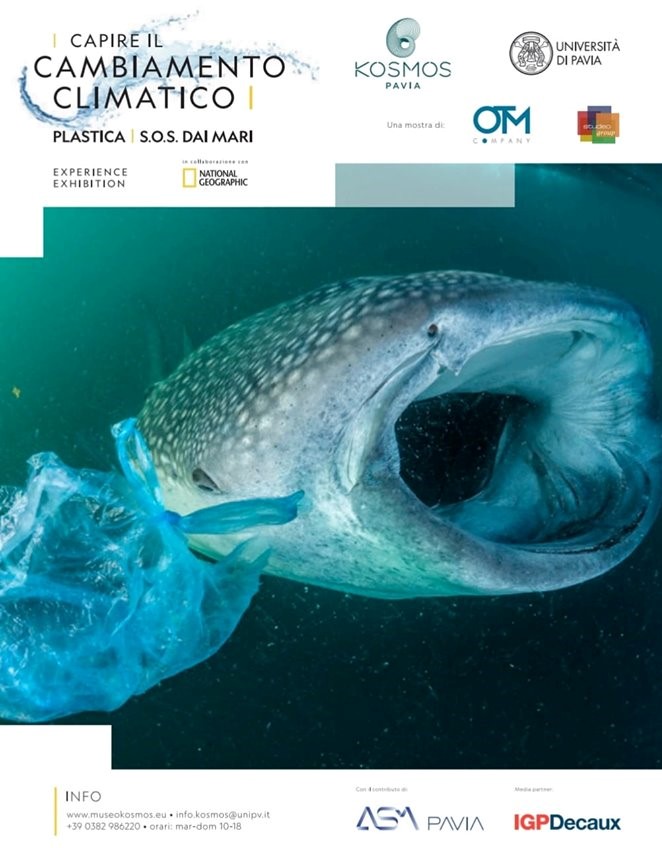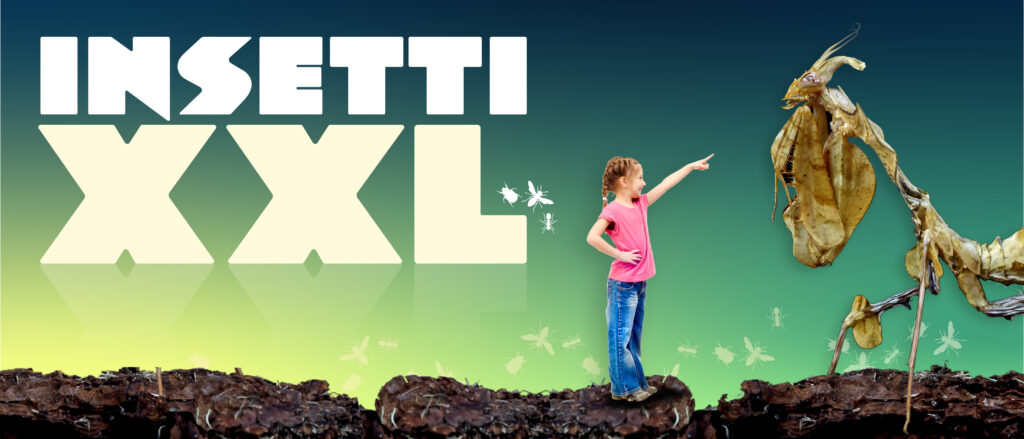
Dates: 3rd February 2023 – 30th June 2024.
Kosmos, the Natural History Museum of the University of Pavia, hosted the Insetti XXL exhibition from Saturday, February 3rd. 2023. It was a journey through reproductions of giant insects to discover these fascinating inhabitants of our planet.
Insetti XXL proposed the installation of over 30 large-format 3D models of insects, magnified from 20 to 200 times, some of which reach a height of 2 meters that, without the help of lenses or microscopes, allowed the visitor to appreciate the imaginific shapes and the anatomical structures of these animals. Along with the models, there was also an exhibit on insect sounds and a small overview of the most spectacular insects from the historical collections of the Museum.
The exhibition, has been proposed by Le Macchine Effimere of Rome, was curated by Lorenzo Possenti, an artist who has been able to combine scientific interest in nature with a passion for sculpture.
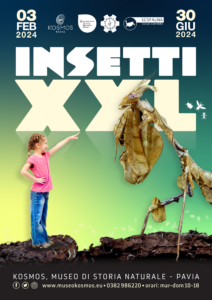
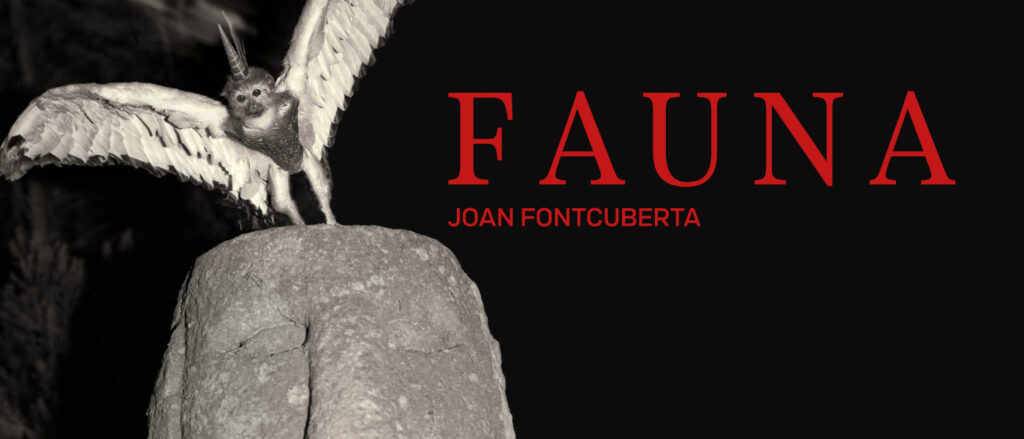
Dates: 8th October 2023 – 7th January 2024.
Kosmos hosted the “Fauna” exhibition by the Catalan artist Joan Fontcuberta, showcasing unpublished photographs that engage with the museum’s original specimens. Photographs, taxidermied animals, drawings, objects, papers, and documents constitute the diverse framework of the exhibition, which revolves around the enigmatic German biologist Peter Ameisenhaufen. He described and classified exceptionally unusual animals, to say the least, ‘mysterious’ and unassimilable to any of the known species, between the 1930s and 1940s of the last century. The exhibition originates from the presumed accidental discovery of his materials and plays on the interplay between truth and fiction, art, and science. In Kosmos’ exhibition arrangement, apart from some previously displayed taxidermy models, there is also space for some animals from the Museum’s teratological collection, which have gained new significance thanks to the photographs taken specifically for this exhibition by Fontcuberta.
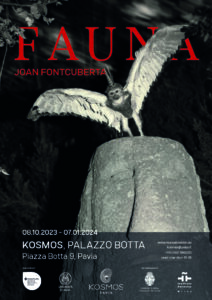
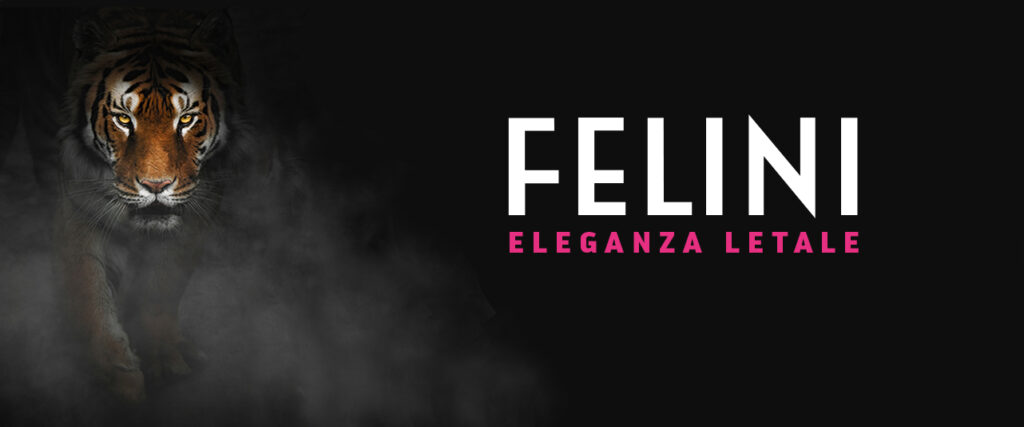
Dates: 25th February 2023 – 10th September 2023.
Kosmos, the Natural History Museum of the University of Pavia, presents a new exhibition, “Felini. Lethal Elegance” an exhibition that proposes the discovery of the world of felines, rare and magnificent animals on the edge of extinction.
Lions, tigers, panthers and wild cats have always represented for humanity a symbol of beauty, strength, courage, and sensual elegance. The felines, due to their peculiarities, are used in the field of advertising and the most refined fashion. However, almost all species in the world are directly or indirectly threatened by man.
On display are 30 taxidermies, life-size models and skulls that allow the visitor to learn about the extraordinary anatomical characteristics of these carnivores. Along the way you will be able to appreciate, among others, the clouded leopard of Vietnam, the snow leopard of the Himalayas, the cheetah, the marbled cat of China, the Siberian tiger and the lion. Through the panels that accompany the specimens, it will be possible to relive stories of felines returned to freedom and to get to know some zoologists who have changed the fate of many animals.
The exhibition is curated by Naturaliter from Pisa.
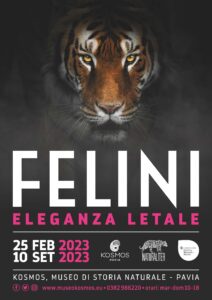
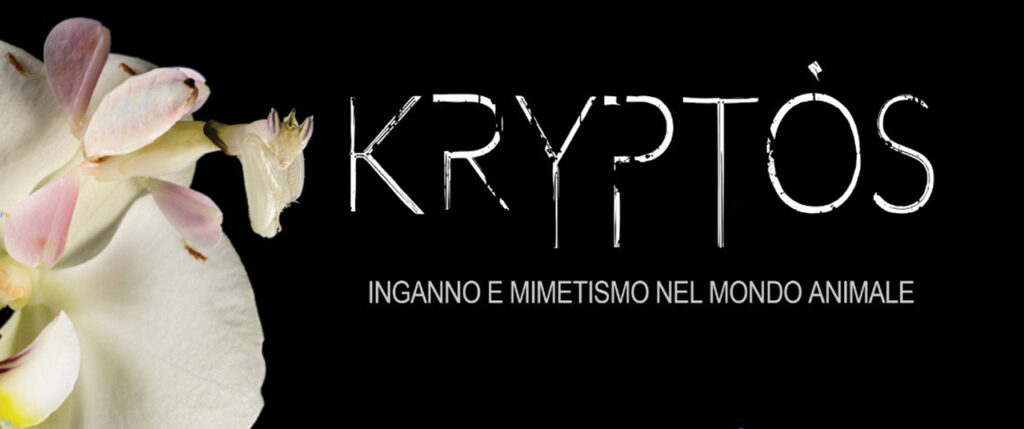
Dates: 8th October 2022 – 5th February 2023.
In nature, nothing is as it seems and deception is the only rule. Mimicry does not mean just hiding but pretending to be something different; the animals show shapes and colors of what surrounds them or they scare the enemies with prominent colors. Many of them pretend to be what they really are not: a leaf, a flower, a sprig, a tuft of moss or adopt the aspect of dangerous species even if they are completely devoid of offensive means.
The Kryptòs exhibition. Deception and mimicry in the animal world told this fascinating world with a selection of very special live animals: frogs, leaf insects, mantises and spiders with surprising liveries, presented in furnished terrariums that reproduce the natural environment of the species hosted (all born in captivity and not dangerous).
A first section examines the adaptations that animals have developed to disappear in the environments where they live while the second focuses on the aposematic colors and the most refined forms of deception.
The last section illustrates the different ways in which animals perceive the colors of the world around them, an aid to understand their curious behaviour.
The entire exhibition was accompanied by large-format photographs and video projections by Emanuele Biggi and Francesco Tomasinelli, biologists, professional photographers and authors of scientific exhibitions.
The KRYPTÒS exhibition was curated by Emanuele Biggi and Francesco Tomasinelli.
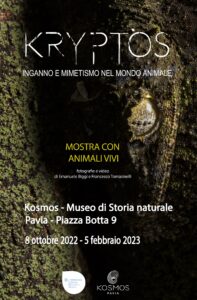
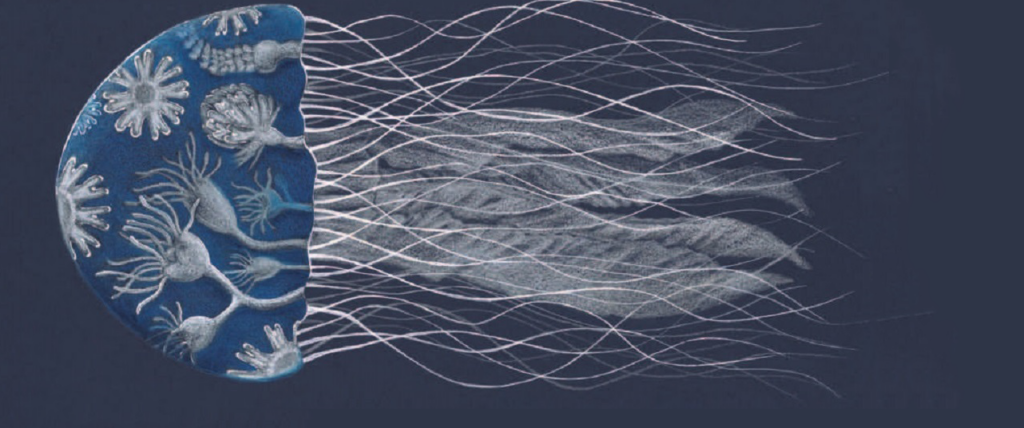
Dates: 5 March to 12 June 2022
An exhibition dedicated to the fascinating universe of jellyfish, narrated through the award-winning picture book “Il giardino delle meduse“, written by Paola Vitale, illustrated by Rossana Bossù and published by Camelozampa.
Surprising creatures that are still mostly unknown, they increased enormously in number throughout the Mediterranean due to the combined effect of climate change and overfishing, jellyfish are important to study because they act as indicators of the environment modifications. The exhibition is designed to guide visitors of all ages on an engaging and unusual journey to discover these fascinating marine animals, which appeared on earth hundreds of millions of years before human beings.
The evocative illustrations are the focus of the itinerary, which spans through large-format color graphics, in which different species of jellyfish have been represented, with sinuous shapes and full of charm. Visitors will be able to learn about the characteristics of each species, from the most venomous to the oldest in the world, which arrived to the present day in the form of fossils. There will be some curiosities related to jellyfish, for example their use in the kitchen, as well as literary and musical references. Kosmos Museum is also showing two original plates from the second half of the nineteenth century used at the time for teaching zoology to the university students. A short video will show the very elegant movement of jellyfish in the sea and, thanks to the help of optical instruments, it will be possible to observe the hydras, tiny freshwater cnidarians that live in clean and well oxygenated waters.
An exhibition that not only aims to be a scientific and cultural study of a zoological taxon, but also a path capable of thrilling and enchanting visitors. The magnificent illustrations signed by Rossana Bossù are an invitation to admire the beauty and charm of these marine animals, discovering details that are difficult to observe at first glance.
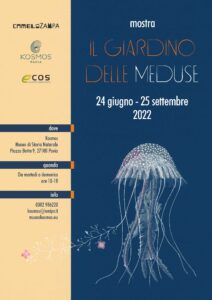
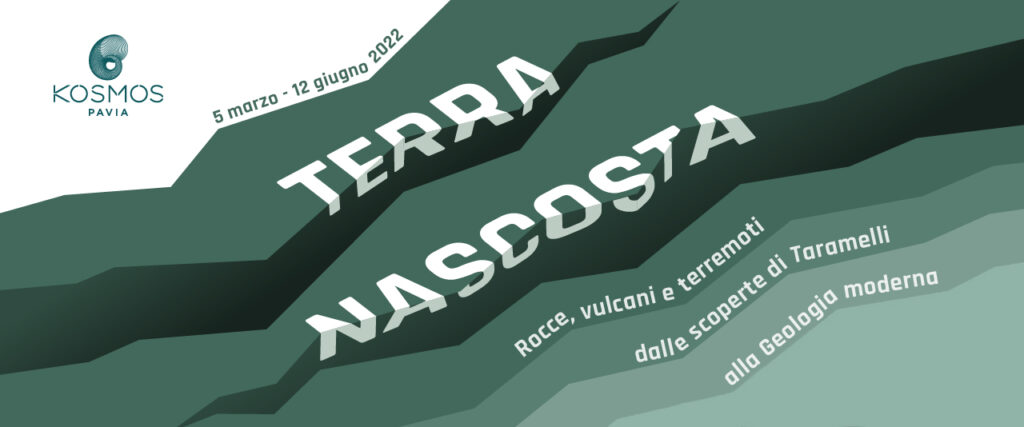
Dates: 5 March to 12 June 2022
One hundred years after the death of Torquato Taramelli, professor of Geology at the University of Pavia, author of the first Italian seismic map and the Geological Map of Italy, Kosmos presented a temporary exhibition with a focus on hands on experience aimed to understand the structure of our planet. Visitor will discover the geological processes that have a strong impact on our society: earthquakes, volcanic eruptions, hydrogeological instability.

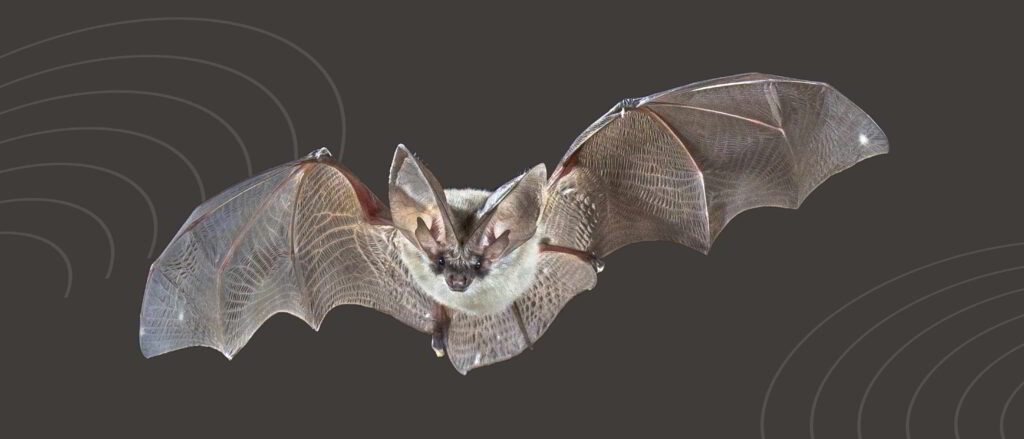
Dates: 3/6/2021 to 9/1/2022
Kosmos, the Natural History Museum of the University of Pavia, celebrates its reopening and opens to the public on June 3, 2021 the exhibition ” Ali nella notte. I pipistrelli tra scienza e immaginario”.
The exhibition illustrated the world of bats in a storytelling that deals with biology to ecology, species conservation, interactions with humans up to the recent research related to the spread of the Coronavirus.
The exhibition, created by the collaboration between the Platypus naturalistic studio in Milan and the Kosmos museum, debuted in Pavia and will then be proposed in other Italian cities. Ali nella notte obtained the patronage of ANMS (National Association of Scientific Museums) and GIRC (Italian Chiroptera Research Group).
Set up in the museum in the semicircular hall for temporary exhibitions, “Ali nella notte” offered a 140 square meter itinerary divided into 6 thematic areas through panels, models, multimedia exhibits and habitat reconstructions.
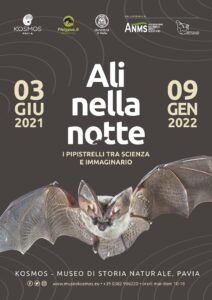
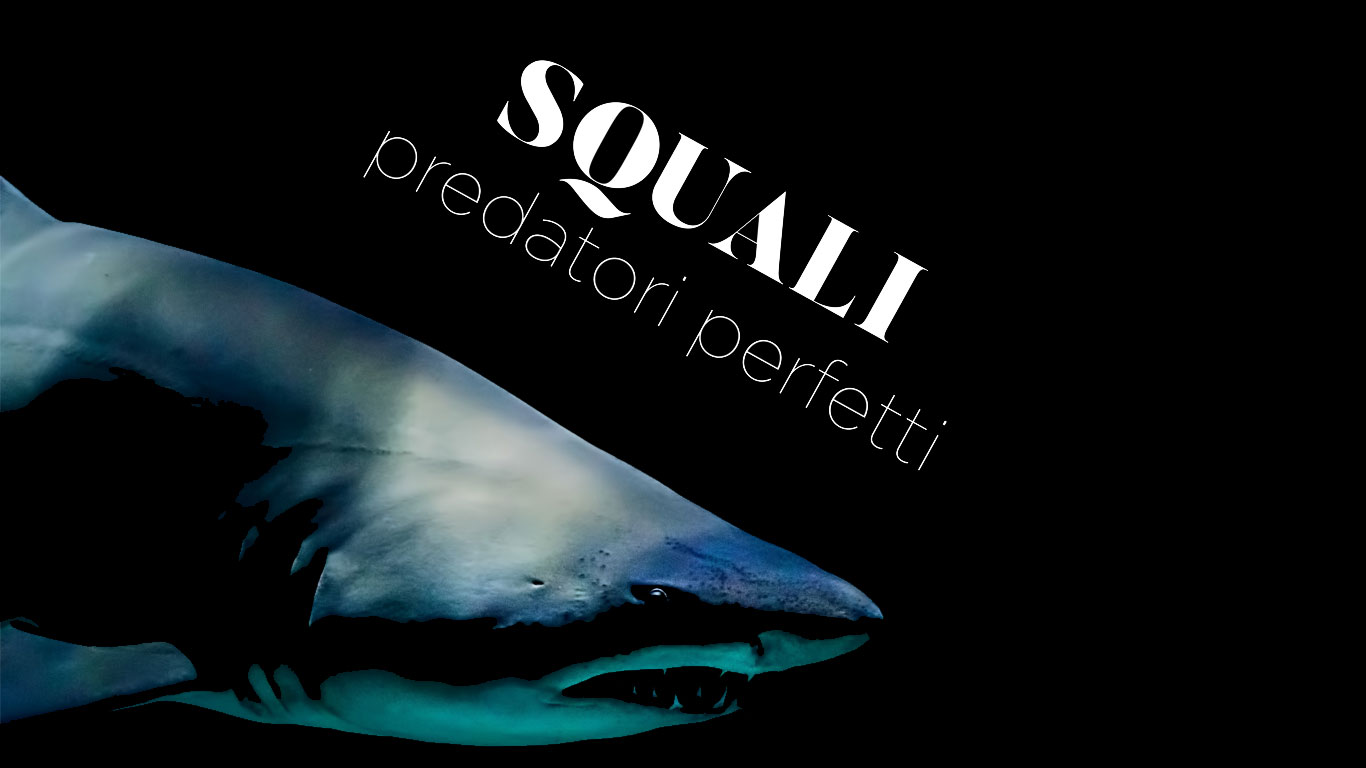
Dates: 15/2/2020 to 17/1/2021
The exhibition “Sharks. Perfect predators” was created in collaboration with Naturaliter. Visitors get to know the most fearsome denizens of the seas through 30 true-to-life models.
The sharks introduce scientific information and numbers about species, habitats, anatomy, and other interesting aspects of these marine predators.
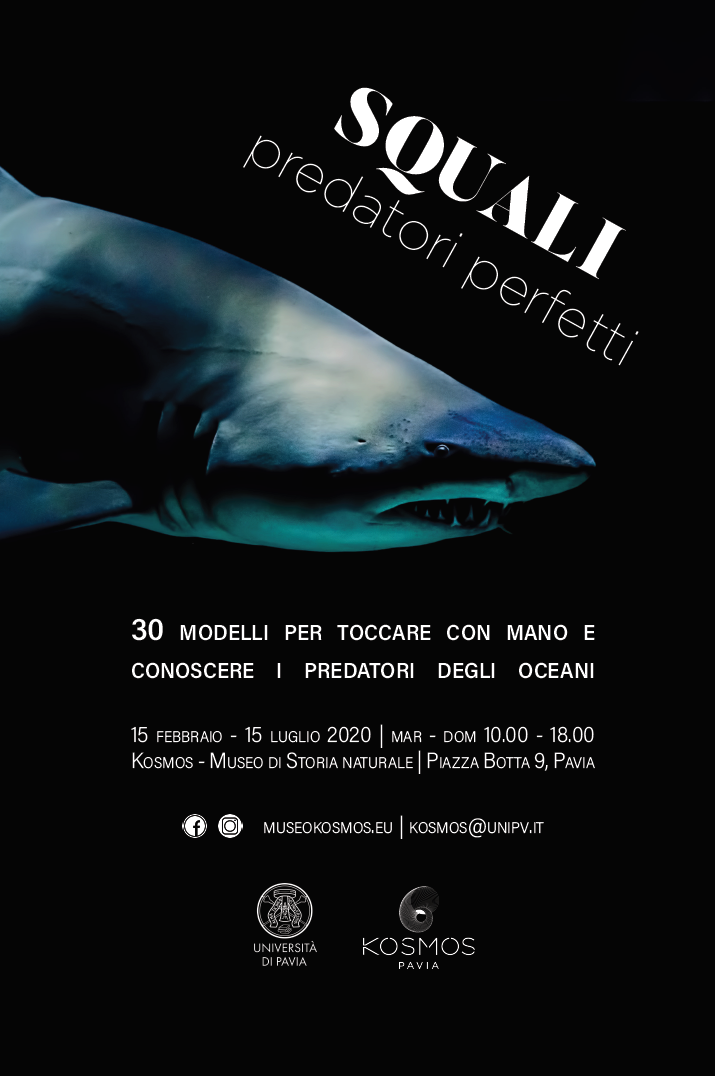
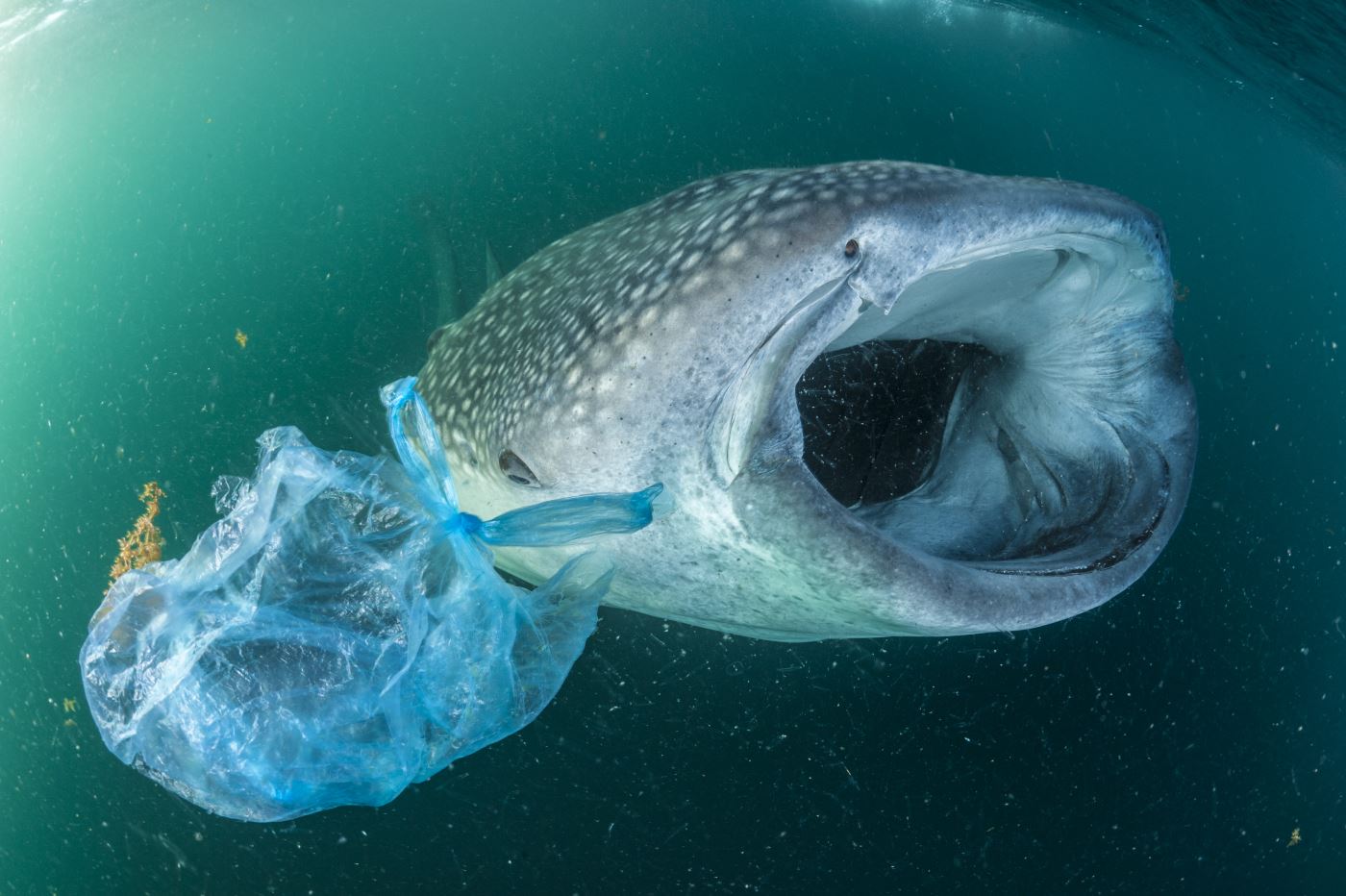
Dates: 21/9/2019 to 6/1/2020
This exhibition shows the effects of plastic waste in the seas. It was organized in collaboration with the National Geographic Society and sponsored by the local waste management authority (ASM Pavia) and by the promotion and communication company IGPDecaux.
An immersive visual exhibition where the sight of uncontaminated seabeds clashes with that of marine animals trapped in plastic materials; heavenly beaches with beached cetaceans; and pristine atolls with macro-pieces of plastic waste. These contrasts catalyze attention to the tragic future that could await Earth’s inhabitants.
Visitors are invited by the blue whale skeleton dominating the museum exhibition room to measure their own ecological footprint by doing an interactive activity, and see for themselves what the pro capita impact of an Italian consumer can be.
Access is included in the Kosmos entrance ticket because the exhibition provides a fitting open-ended conclusion to the issues posed in the last part of the museum itinerary: we humans are generally aware of the extinctions and species invasions, pollution and exploitation that we have caused, but specific knowledge may be what encourages us to adopt the more virtuous behaviors that will protect future generations.
